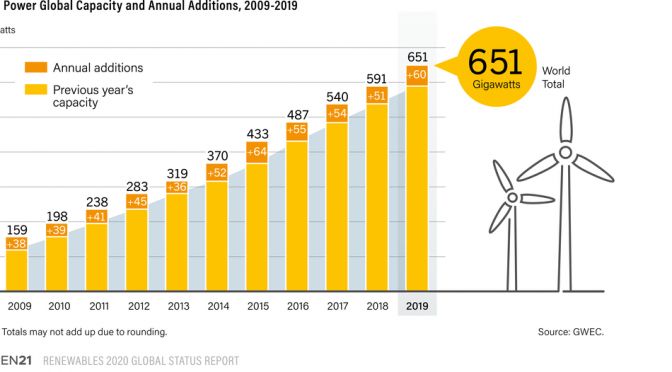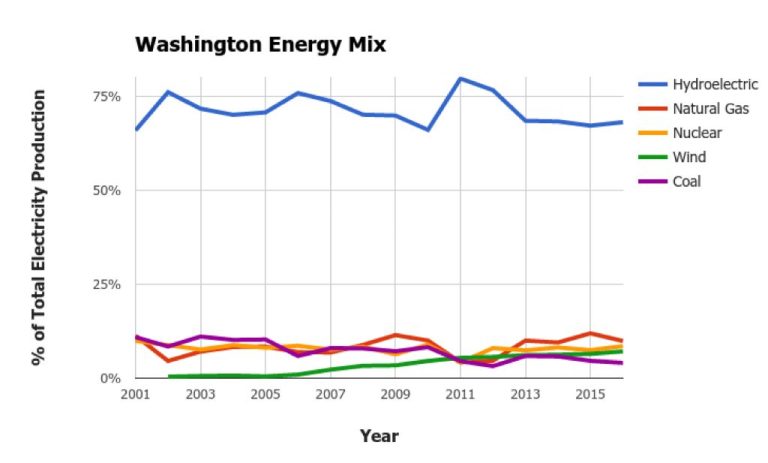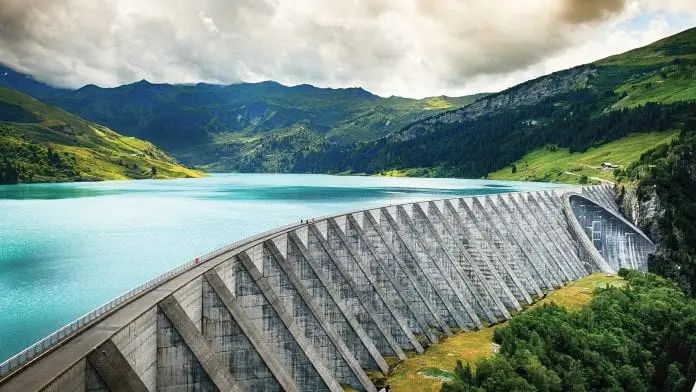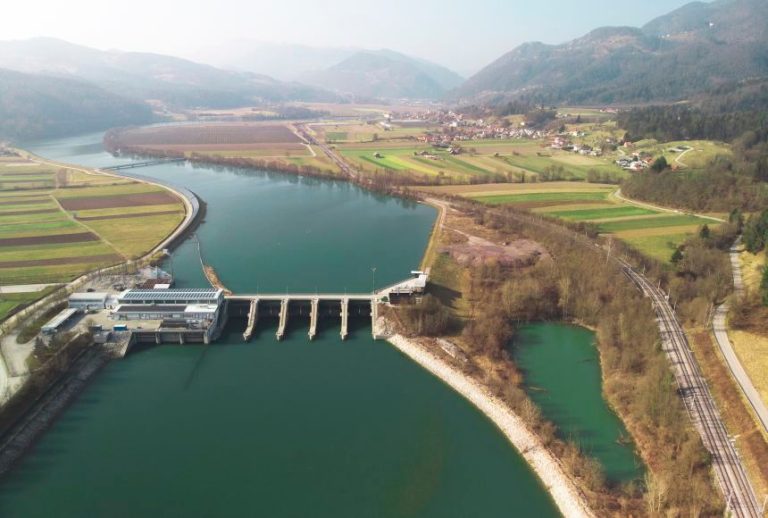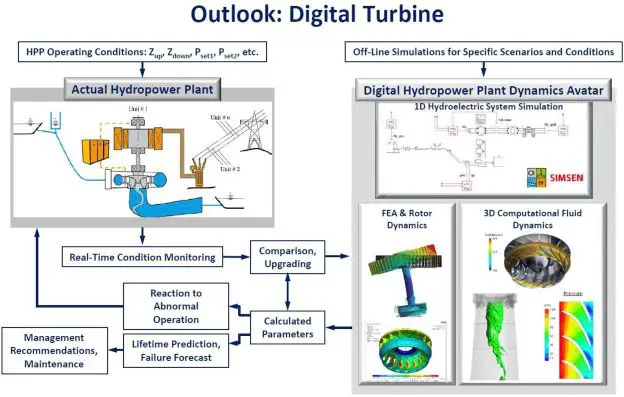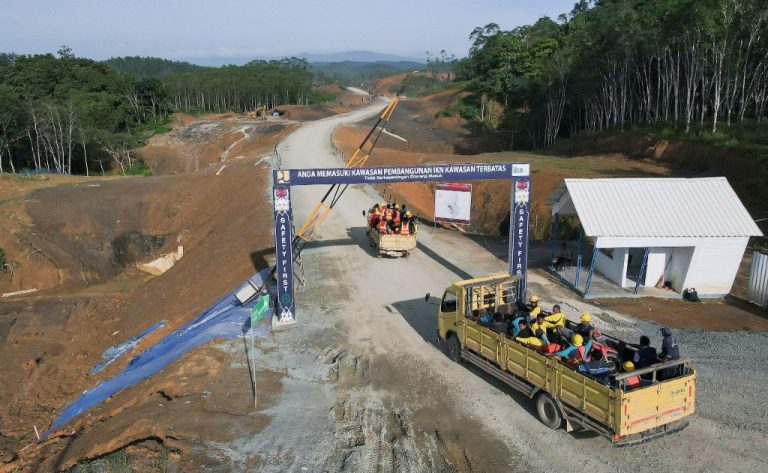What Are Different Types Of Hydropower?
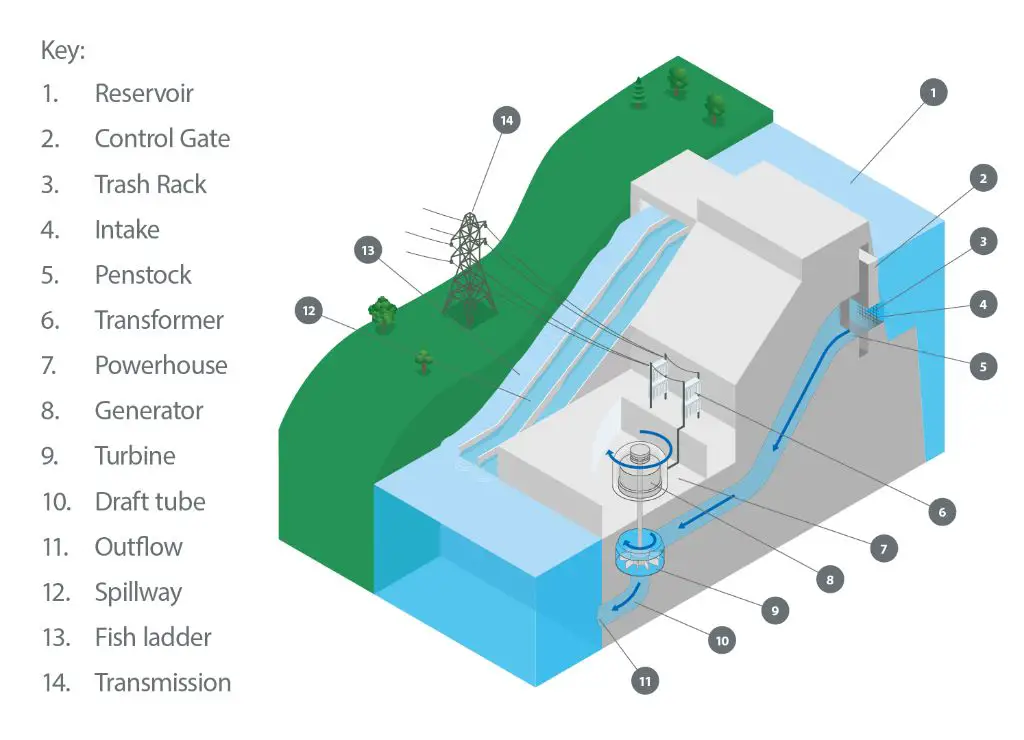
Hydropower is a renewable source of energy that utilizes moving water to generate electricity. It is considered renewable because it is continuously replenished by the water cycle. Globally, hydropower is the largest source of renewable electricity, accounting for over 60% of renewable energy generation (https://www.hydropower.org/iha/discover-facts-about-hydropower). With the rising demand for clean energy and the need to reduce greenhouse gas emissions, hydropower plays a crucial role as a reliable and sustainable energy solution.
Most hydropower facilities capture the energy from flowing river water by channeling it through turbines connected to generators. The moving water spins the turbine blades, which then rotate electromagnets around a coil to produce electric current. The electricity can then be transmitted to homes, businesses, and industries. Compared to fossil fuels, hydropower emits much lower amounts of greenhouse gases and air pollution. It also provides grid reliability and storage capabilities.
As nations work to expand renewable energy and phase out fossil fuels, hydropower will continue to serve as the backbone of clean electricity generation globally. With its renewable nature, low emissions, and storage capacity, hydropower delivers substantial environmental and economic benefits.
Hydroelectric Dams
Hydroelectric dams are one of the most common and well-known forms of hydropower. They operate by utilizing dams on rivers to store water in reservoirs. When power is needed, water can be released from the reservoir through turbines to generate electricity.
Some of the largest hydroelectric dams in the world include the Three Gorges Dam in China, Itaipu Dam on the Brazil/Paraguay border, and the Grand Coulee Dam in the United States. These massive structures can generate thousands of megawatts of electricity by harnessing the power of huge rivers like the Yangtze, Paraná, and Columbia.
While hydroelectric dams provide a reliable source of renewable energy, they also substantially alter downstream river ecosystems. Dams prevent nutrients from flowing downstream, reduce sediment transport, and often obstruct fish migration routes. The reservoirs created by dams also flood large areas of land. However, technology improvements and fish ladders can help mitigate some of these environmental impacts.
Pumped Storage
Pumped storage hydropower (PSH) uses two reservoirs at different elevations to store energy and generate electricity. Water is pumped from the lower reservoir to the upper reservoir when electricity demand is low. During times of high electricity demand, water is released from the upper reservoir through a turbine to the lower reservoir to generate electricity (1).
PSH is considered a type of battery because it can store large amounts of energy and release it on demand. It currently represents 95% of utility-scale energy storage in the United States (2). PSH provides services vital to the reliability of the power grid including energy storage, frequency regulation, provision of operating reserves, and voltage support (1).
The round trip efficiency of PSH ranges from 70-80%, meaning 70-80% of the electrical energy used to pump the water into the elevated reservoir can be regained when the water is released to generate electricity (3). PSH is one of the most mature, cost-effective, and efficient forms of energy storage available.
(1) https://www.energy.gov/eere/water/how-pumped-storage-hydropower-works
(2) https://www.hydropower.org/factsheets/pumped-storage
(3) https://www.energy.gov/eere/water/pumped-storage-hydropower
Run-of-River
Run-of-river (RoR) hydropower utilizes the natural flow of a river to generate electricity. These systems do not require large dams or reservoirs for water storage. Instead, a portion of the river water is diverted through a pipe or channel (penstock) to turn turbines and generate power before being discharged back into the river downstream[1].
While run-of-river systems are considered more environmentally friendly than dams with large reservoirs, they still impact rivers in several ways[2]:
- Flow depletion – Diverting water reduces flow in the stretch of river between the intake and discharge points, known as the dewatered reach. This can negatively impact aquatic habitats.
- Changes in flow regime – Natural high/low flow patterns are disrupted, which can affect cues for fish migration and spawning.
- Sediment transport – Dams block sediment flow, leading to erosion downstream.
- Habitat fragmentation – Dams and other structures act as barriers to fish passage and movement.
Proper siting, design modifications, and environmental flow requirements can help mitigate some of these impacts. However, run-of-river projects should be evaluated for cumulative effects, especially on rivers with multiple existing or proposed hydropower facilities[3].
[1] https://www.sciencedirect.com/science/article/pii/S1364032121001271
[3] https://www.osti.gov/servlets/purl/1854486
Micro Hydropower
Micro hydro systems generate up to 100 kilowatts of electricity and are often used by homeowners and small businesses for small scale power. They utilize the energy of flowing water to generate electricity with a turbine generator unit, similar to large hydroelectric dams but on a much smaller and decentralized scale. The systems can provide completely off-grid renewable energy for homes, farms, or villages.
Micro hydro power is considered a type of small hydro, defined as hydropower with generation capacity below 10 megawatts. Advantages of micro hydropower include reduced grid dependency, low operating costs, and less environmental impact compared to large hydro. Micro hydro can provide a reliable and consistent local power source in areas without electricity access.
According to the Department of Energy, micro hydro systems are often “run-of-river” meaning little to no water storage is required. Water is diverted from a stream through a pipeline and conveyed to electricity generating turbine equipment. Power output depends on the volume and flow of the water source.
Micro hydro capacity ranges from just a few hundred watts to one hundred kilowatts. Smaller pico hydro systems are only a few kilowatts and can provide electricity for off-grid homes and remote areas. Larger micro hydro around 100kW ranges can serve communities, small industries or villages. Overall global potential for micro and small hydro remains largely untapped.
Tidal Power
Tidal power utilizes the rise and fall of tides to generate electricity. Tidal energy systems take advantage of the kinetic energy created by large bodies of water moving in and out as tides. There are two main types of tidal energy systems: tidal barrages and tidal stream generators.
Tidal barrages are essentially dams built across estuaries or inlets. When the tide comes in, gates in the barrage are closed to allow the water to fill up the basin. Then when the tide goes out, the gates are opened and the water flows back out to the sea. This movement of water spins turbines to produce electricity. The largest operational tidal barrage facility is the Sihwa Lake Tidal Power Station in South Korea, which has a capacity of 254 MW [1].
Tidal stream generators are similar to wind turbines, except they harness the energy of moving water rather than wind. The blades of tidal stream turbines spin as the water currents move past them, turning a generator to produce electricity. Tidal stream generators can be built in open waterways or placed on the seabed. Canada currently has the fourth largest tidal stream capacity in the world at approximately 40 MW, with potential for significant further expansion [2].
Wave Power
Wave power refers to the energy harnessed from the movement of ocean surface waves. Waves contain a tremendous amount of energy and have the potential to be a major renewable energy source. The theoretical annual energy potential of waves off the coasts of the United States is estimated to be as much as 2.64 trillion kilowatthours, or the equivalent of about 87% of 2020 total annual U.S. electricity generation (https://www.eia.gov/energyexplained/hydropower/wave-power.php).
There are a few main wave energy conversion technologies being developed and tested:
- Point absorbers – These are floating structures that absorb wave energy from all directions. They use the rise and fall motion of waves to drive an electrical generator.
- Attenuators – These are long floating structures oriented parallel to the direction of the waves. The waves cause flexing where the segments connect, driving hydraulic pumps to generate electricity.
- Oscillating water columns – These are partially submerged structures, often installed nearshore or breakwaters, that contain air chambers. As waves enter, the water column rises and falls, forcing air through a turbine to produce electricity.
- Oscillating wave surge converters – These have structures that pivot back and forth as waves pass, driving a generator through the motion.
Companies are actively developing and testing wave energy converter designs suitable for commercial scale installations. For example, CorPower Ocean is testing a high efficiency point absorber device off the coast of Portugal that resonates with incoming waves (https://www.nrel.gov/news/program/2023/designing-the-future-of-wave-energy.html). With continued innovation and testing, wave power could become a viable renewable electricity source, especially for coastal communities.
Small Scale/Off-Grid
Off-grid small scale hydropower systems typically generate under 10 kW of electricity and are designed for remote areas or properties not connected to the main electrical grid. These systems harness the energy from small creeks, springs, or streams on private property and provide localized renewable electricity. According to the U.S. Department of Energy, micro-hydropower systems with capacities less than 100 kW are well-suited for remote sites with energy needs under 1,000 MWh/year. The major advantage is providing self-sufficient renewable electricity without relying on the utility grid.
Small scale hydro setups require minimal civil works and have a low environmental impact. They also offer a long service life of around 20-30 years with regular maintenance. The main components include a water turbine, generator, power control systems, and interconnection equipment. Common turbine types are Pelton wheels for high head sites and Francis or crossflow turbines for low head streams. Run-of-river designs divert a portion of the streamflow through a channel and penstock to the turbine without needing a dam. These systems provide reliable baseload power and avoid battery storage needs.
According to the U.S. Department of Energy, a micro-hydropower system that generates up to 100 kilowatts of electricity costs between $3,000 and $80,000 depending on site conditions and system size. With federal tax credits and some state incentives, small scale hydro can have a reasonable payback period for off-grid residential use.
Pico Hydropower
Pico hydro is a type of small scale hydropower that generates under 5 kW of electricity (Khomsah, 2019). Pico hydro systems are well suited for providing power to remote, off-grid communities and households.
Pico hydro can provide a renewable, low cost energy source for rural villages without access to the main electrical grid. These small hydro systems take advantage of local water resources like streams, rivers, or irrigation canals to generate electricity. The power output is usually enough for lighting, device charging, small appliances, and other basic needs (Williamson, 2019).
Some of the main advantages of pico hydro for rural electrification are:
- Utilizes local water resources that remote villages already have access to
- Low operating costs once installed
- Provides a clean, renewable source of electricity
- Can operate independently, off-grid
- Simple construction and easy maintenance
With proper community engagement and training, pico hydro presents a sustainable, long-term solution for meeting basic electricity needs in off-grid rural villages worldwide (Khomsah, 2019).
Conclusion
In summary, hydropower utilizes the energy from flowing or falling water to generate electricity. The main types of hydropower plants are hydroelectric dams, pumped storage, run-of-river, and micro hydropower. Each has its own advantages and applications. Dams provide large-scale renewable baseload power but can impact the environment. Pumped storage recycles water between reservoirs to store energy. Run-of-river generates electricity from the natural flow of rivers without dams. Micro hydropower provides small decentralized energy systems. Emerging technologies like tidal and wave power hold promise to further expand hydropower’s clean energy potential.
Looking ahead, hydropower will continue playing an essential role in the global renewable energy mix. With ample untapped potential worldwide, hydropower capacity is projected to grow nearly 20% by 2030. Key future opportunities involve modernizing existing facilities, developing new small and low-impact projects, advancing marine technologies, and integrating hydropower with other renewables through hybrid systems and pumped storage. Realizing the full sustainable hydropower potential can help nations achieve energy security, meet emissions targets, and stimulate economic growth.

